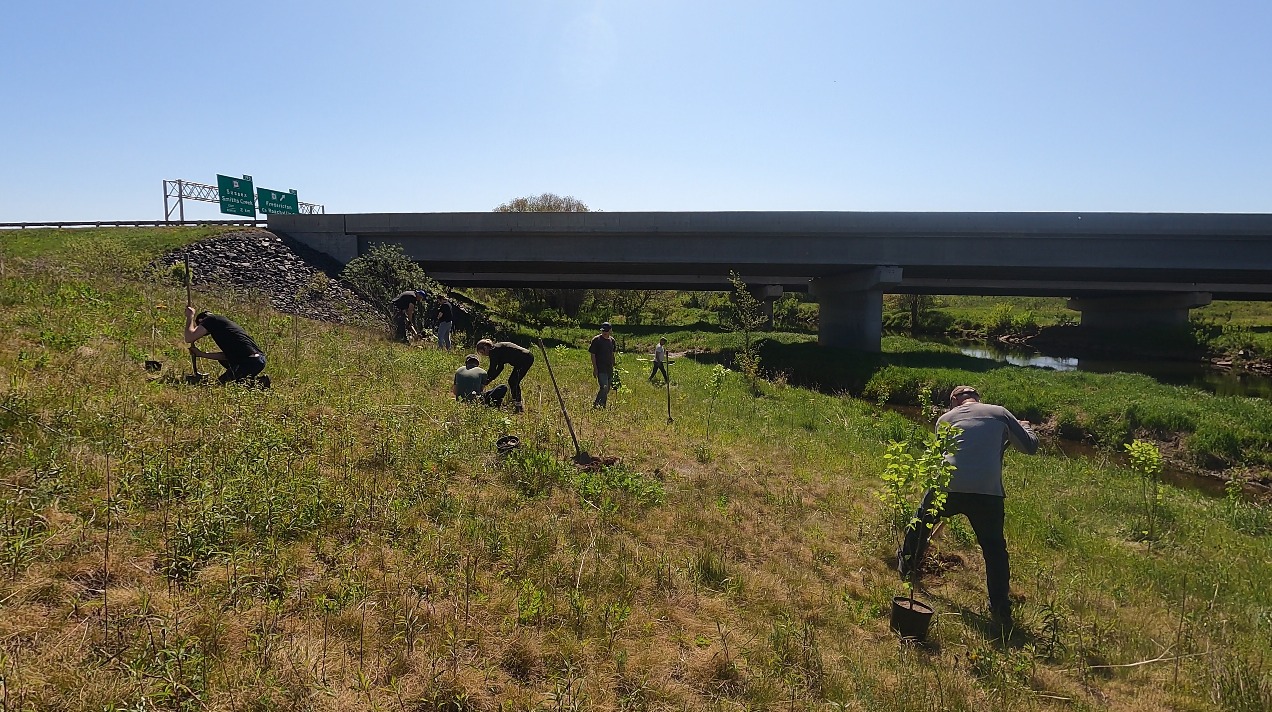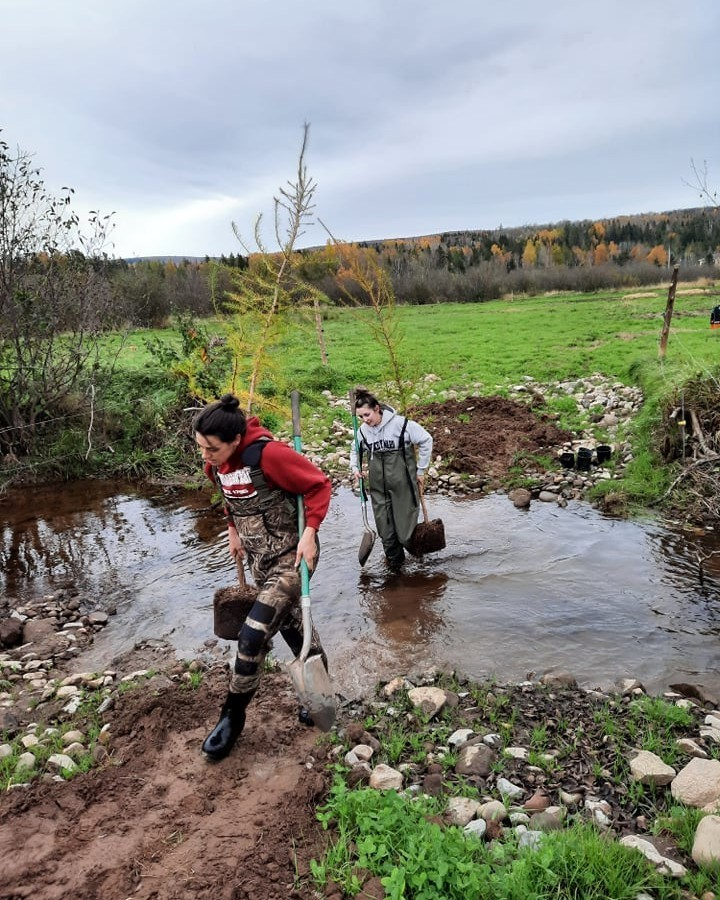Water we up to at Wolastoq?
Known in the Wolastoqiyik language as “beautiful and bountiful river,” the Wolastoq (Saint John River) in New Brunswick has seen better days. Centuries of human activity and development have greatly degraded the watershed. Coupled with climate change, this leaves wildlife and people vulnerable to extreme weather impacts like catastrophic floods.
WWF-Canada has been working closely with local organizations since 2012 to help restore the Wolastoq. To find out more, we talked to Kristyn Lyons, WWF-Canada’s Resilient Habitats Associate Specialist.

What kind of restoration work are we doing in the Wolastoq?
In earlier years, WWF-Canada funded several in-stream restoration projects in the watershed. These focused on removing barriers and opening waterways for fish to pass through and reach their spawning grounds. Although in-stream restoration is still critical in our work, the focus and funding has shifted to riverbank restoration. Part of this is helping our partners access funding to plant trees and shrubs because that work mitigates floods, reduces soil erosion, stabilizes riverbanks and sequesters carbon — all essential aspects in building resilience to climate change. Ultimately, both restoration activities are part of our holistic approach to complex ecosystem restoration.
Any notable highlights since 2020?
We’ve continued to build on the region’s conservation planning using Priority Threat Management (PTM), which is a new conservation framework that identifies cost-effective, highly beneficial and feasible strategies that would benefit the greatest number of species. This was the basis of some of the strategies we’ve been implementing, like revegetation. In 2021, WWF-Canada supported the Atlantic Coastal Action Program Saint John (ACAP SJ) and Kennebecasis Watershed Restoration Committee (KWRC) to plant 20,505 trees across the watershed.
We’ve also continued to host the annual Wolastoq (Saint John River) Summit that brings together a diverse group of practitioners, rightsholders and stakeholders in the region. This serves as an avenue for us to openly discuss successes, challenges and restoration techniques and keeps us up to date on how to best serve the region.

What are we doing now?
We’ve been involved in Environment and Climate Change Canada’s (ECCC) Wolastoq Priority Place Collaborative since 2023. It strives to take a holistic approach to recovering species at risk and managing the Wolastoq watershed. We’re using two approaches to work towards this goal — one is to build capacity through workshops focused on restoration topics, addressing questions or concerns on restoration, and providing opportunities for knowledge sharing.
The other is to support smaller environmental NGOs in the region who do on-the-ground restoration, like our work with KWRC to restore degraded agricultural sites adjacent to riverbanks and improve riparian setbacks, which is the required land area between a shoreline and development.
And for the second time around, we are supporting ongoing planting efforts throughout the lower watershed. We’ve partnered with the Nashwaak Watershed Association Inc. (NWAI), Kennebecasis Watershed Restoration Committee (KWRC), Oromocto River Watershed Association Inc. (ORWAI), Atlantic Coastal Action Program Saint John (ACAP SJ), and the New Brunswick Aboriginal People’s Council (NBAPC) to plant more than 65,000 trees by March 2025.
How can you help?
Planting season starts again this Spring! Watch out for volunteer opportunities through our partners’ social media pages or start planting your own native plants with re:grow!

